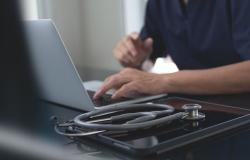The project Conscious Womanactive at the San Luca medical offices in Lucca, represents a new model of complete and correct health education in order to make women participate in their own bodies and free in preventive behaviors.
Doctor Roberto Baldocchi, breast specialist, who is in charge of the project, talks to us about it.
“Before addressing the topic of specific prevention for breast cancer – he says – I will talk about the various aspects of prevention in general. We talk about primary prevention when the causes that generate tumors or other pathologies are modified, or reduced or completely eliminated. We talk about secondary prevention instead when tools or behaviors are used that anticipate the diagnosis, reducing the consequences of a possible diagnostic delay, affecting mortality, morbidity and restoration of personal, family and social psychophysical activities. We talk about tertiary prevention when those measures are implemented, including those of a rehabilitative nature, which reduce the late consequences (disability) of the disease and/or the recurrence of the neoplastic disease”.
“In primary prevention, therefore, we need to work on the causes – continues Dr. Baldocchi – We talked about it last week That the causes must be identified as chemical, physical and biological. Environmental monitoring is fundamental for this type of prevention: air pollution as a gaseous vehicle through breathing takes on fundamental importance, as does nutrition with foods produced and/or stimulated as chemical additives or grown in highly polluted environments. Even foods produced with hormone-based or other feed (crops, animal breeding, etc.) can have a significant component. Environment also means energy, in fact both in production and related transmission alterations in the chromosomal context can be generated. Furthermore there is cosmic radiation from which we are almost totally protected by the Earth’s magnetic field. A further element is represented by the viral and bacterial transmission and expression of biological factors. All these types of prevention are regulated by laws that must be continuously updated and applied and controlled by all the relevant bodies such as Arpat, Nas, Inail, hygiene institute etc….”
“Then there are individual primary prevention behaviors – explains the breast specialist – healthy and balanced diet with selected and validated products, do not exceed the use of fats, sugars or alcohol, the use of vegetable fibers with vegetables and fruit, prolonged exposure to the sun with specific protection, physical activity and non-sedentary lifestyle is excellent, do not abuse of the use of tobacco and above all of the use of drugs of all types, especially hormonal ones, without a specific medical prescription. Reducing the use of X-rays, CT scans and ionizing radiation from radioactive isotopes is also important. Very significant is prevention in working environments for which Inail is responsible for the related controls; we often see work and/or maintenance carried out without due precautions. Furthermore, hygiene in environments is a decisive element in eliminating or reducing contact with biological substances or elements that can be acquired or transmitted. For the latter, vaccinations are crucial in preventing diseases and reducing long-term negative consequences with significant impacts on the NHS in economic, organizational and performance terms. Too often, due to lack of specific knowledge or negligence in information or due to inadequate legislative prevention and control, primary prevention is unfortunately given little importance. Everyone tries to do as they please without adopting common strategies that have a much more significant impact on prevention in general.”
“Mortality under 45 years of age is approximately 26/28% for women affected by breast cancer while it is 10/12% in women over 50 – he concludes – If mammographic screening has reduced this mortality over time a similar result should be expected with a breast screening performed among women 18-50. So long as screening done with mammography has little effectiveness in women with dense breastswith prosthetics and is contraindicated during long periods of pregnancy and breastfeeding the only current tool that is available is the Mammotest with Mammowave technology”.
In this regard, please refer tointerview done with Dr. Roberto Baldocchi where this new technology is illustrated.
For any further information, further information or to make a telephone appointment with Doctor Roberto Baldocchi, the number 0583.080338 and the Web page.





